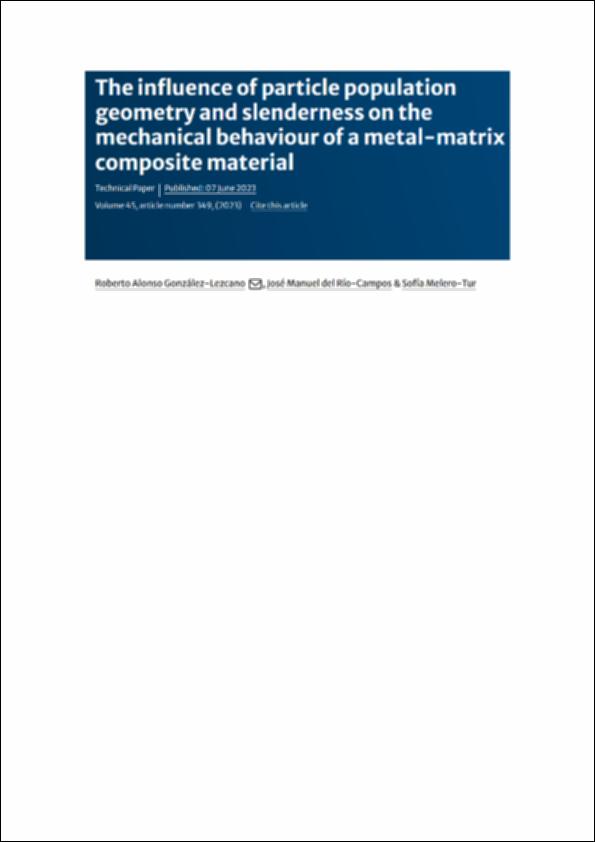Please use this identifier to cite or link to this item:
http://hdl.handle.net/10637/14736The influence of particle population geometry and slenderness on the mechanical behaviour of a metal-matrix composite material
| Title: | The influence of particle population geometry and slenderness on the mechanical behaviour of a metal-matrix composite material |
| Authors : | González Lezcano, Roberto Alonso. Río Campos, José Manuel del Melero Tur, Sofía |
| Keywords: | Metal matrix composite; Reinforcement particles; Ductile fracture; Damage mechanism |
| Publisher: | Springer |
| Citation: | González-Lezcano, R.A., del Río-Campos, J.M. & Melero-Tur, S. The influence of particle population geometry and slenderness on the mechanical behaviour of a metal-matrix composite material. J Braz. Soc. Mech. Sci. Eng. 45, 349 (2023). https://doi.org/10.1007/s40430-023-04269-9 |
| Abstract: | Progress in composite materials is leading to new research lines in this field, creating analytical models to study their mechanical behaviour, improving manufacturing procedures or trying to improve the problems that appear at the matrix-particle interface. The material to be studied consists of a nickel alloy-based metal matrix reinforced with Silicon Nitride particles (Si3N4). According to the manufacturer's data, the particle fraction is 12% of the total volume of the material. The data used are the results of a microscopic analysis carried out on a series of specimens to establish the following concepts: mean size, size distribution and generic dimensions of the particles; distribution, orientation and orientation trends of the particles in the matrix; existence or not of clusters and probability of breakage, among others. The main objective of the research, to determine the influence of the geometry of the reinforcement particles on the mechanical behaviour of a composite material. It is concluded that the slenderness of the reinforcement particles influences the material properties by making these particles break more easily. In addition, the stress–strain graphs also show that their slenderness influences the stress and strain field, the elongated shape means that the reinforcement is located closer to the point of load application and, consequently, is subject to higher stresses due to the smaller amount of matrix it possesses. |
| URI: | http://hdl.handle.net/10637/14736 |
| Rights : | http://creativecommons.org/licenses/by-nc-nd/4.0/deed.es |
| ISSN: | 1806-3691 |
| Issue Date: | 7-Jun-2023 |
| Center : | Universidad San Pablo-CEU |
| Appears in Collections: | Escuela de Politécnica Superior |
Items in DSpace are protected by copyright, with all rights reserved, unless otherwise indicated.


